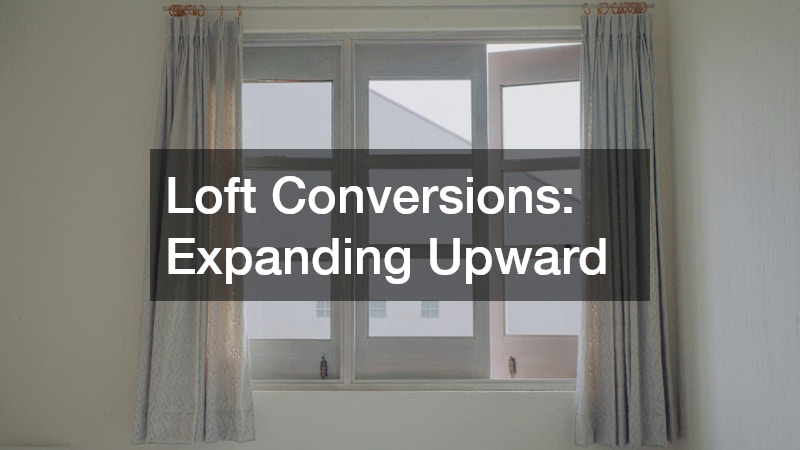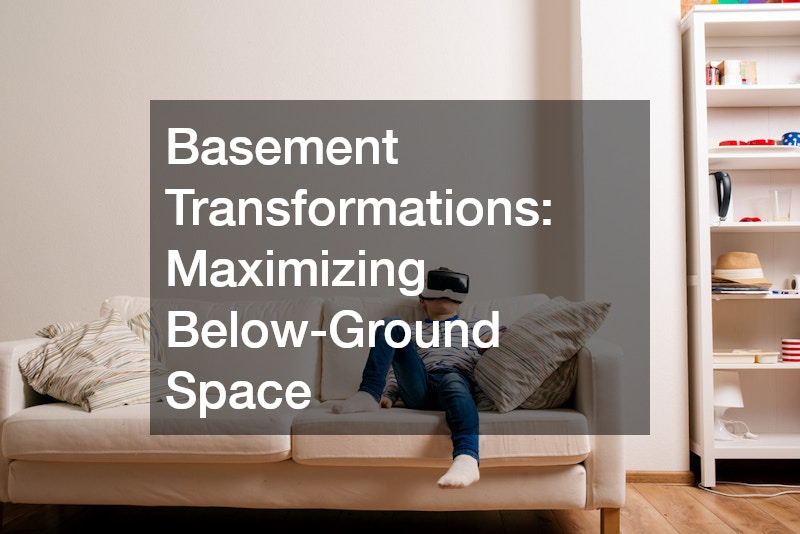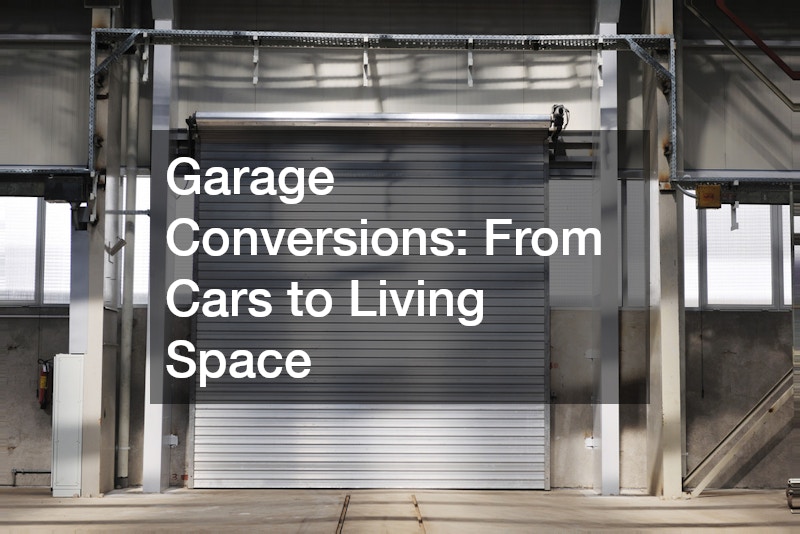When space starts to feel tight at home, many homeowners consider whether it’s time to move or modify their current property. Relocating can be stressful and costly, but choosing to extend a house often offers a more practical, personalized, and cost-effective solution. Extensions can transform how a home looks, feels, and functions, whether you want extra bedrooms, a brighter kitchen, or a more versatile family area. With creativity and smart planning, the possibilities are nearly endless. In this guide, we’ll explore innovative ways to extend a house—from loft conversions and sunrooms to basements and bump-outs—while highlighting the professionals and steps needed for a successful project.
Loft Conversions: Expanding Upward
A loft conversion is one of the most efficient ways to add functional space without sacrificing your yard. It can become a new bedroom, home office, or even a guest suite. Homeowners love loft conversions for the natural light they can provide, especially when dormers or skylights are added. They also make excellent use of underutilized attic space, transforming what was once storage into a highly valuable part of the home.
Key considerations include ensuring proper insulation, managing staircase placement, and integrating storage into eaves and sloped areas. Lighting is crucial, and that’s why involving an electrical contractor early in the process is essential. They can handle rewiring, recommend safe load distribution, and design lighting systems tailored to the space. For example, recessed LED lights or strategically placed outlets can make the loft both functional and cozy.
To extend a house upward successfully, it’s also wise to think about ceiling height and local zoning restrictions. Many older homes have attics with limited clearance, and modifying the roofline may be necessary. Dormers can add height and bring in natural light while keeping the space visually appealing. With the right structural and design choices, loft conversions can add hundreds of square feet of usable space and significantly boost resale value.
Kitchen Extensions: The Heart of the Home
For many families, the kitchen is the center of daily life. Extending it opens the door to modern layouts that support entertaining, multitasking, and open-plan living. By knocking down walls or building outward, you can integrate dining and family spaces with a seamless flow. This type of extension also creates an opportunity to improve natural light and circulation, making the kitchen not just larger but far more enjoyable to spend time in.
Practical design tips include installing large islands for cooking and gathering, creating built-in seating, and incorporating floor-to-ceiling glass doors to bring in natural light. However, moving or adding appliances requires careful planning. Partnering with a plumbing company ensures that new sinks, dishwashers, and water lines are placed properly and meet local codes.
Another consideration is ventilation. A larger kitchen often requires a stronger range hood, additional vents, or even upgraded gas lines if you’re planning to switch from electric to gas cooking. Flooring and countertop choices should also balance beauty with durability. A stone countertop island paired with engineered wood floors creates a balance of sophistication and resilience. When planned correctly, a kitchen extension does more than add square footage—it transforms the way families live, entertain, and connect.
Sunrooms and Conservatories: Bringing the Outdoors In
A sunroom or conservatory is the perfect choice for homeowners who want to blend indoor comfort with outdoor views. These spaces are often filled with windows or glass walls, creating a light-filled area ideal for relaxation, reading, or casual dining. They serve as versatile transition spaces, offering the beauty of the outdoors with the protection and convenience of being indoors.
Deciding between a traditional conservatory and a modern sunroom depends on style and function. Conservatories lean toward ornate glasswork, while sunrooms often feature minimal framing and energy-efficient glass. Climate control is an important factor—too hot in summer or too cold in winter can make the space underused. This is where consulting an HVAC contractor makes sense. They can integrate heating and cooling systems, or even suggest radiant floor heating and ductless mini-split systems for efficient comfort.
When extending a house with a sunroom, design integration is critical. Choosing matching rooflines, trim, and paint colors helps the addition look intentional rather than tacked on. Consider how the sunroom will connect to existing rooms—should it flow from the living room, kitchen, or even the master suite? Adding energy-efficient windows also ensures year-round usability while keeping utility bills manageable.
Basement Transformations: Maximizing Below-Ground Space
Many homeowners overlook basements when thinking about expansion. Yet, these areas can be transformed into functional living spaces, from home theaters and gyms to wine cellars and playrooms. Waterproofing and proper ventilation are critical before finishing a basement, as moisture can cause long-term issues.
Before breaking ground, it’s wise to work with land surveyors. They can assess soil conditions, drainage issues, and property boundaries to ensure the expansion is feasible. Surveyors also verify compliance with local building regulations—an essential step when converting or extending below ground. Their expertise can prevent costly mistakes later, such as foundation settling, water intrusion, or disputes over property lines.
To extend a house below ground successfully, careful planning is needed. Egress windows or exterior doors may be required for safety and natural light. Soundproofing is another wise investment, especially if you’re creating a media room or music studio. A well-finished basement not only increases livable space but also provides a retreat-like area that feels separate from the main house.
Adding a Second Story: Major Structural Expansion
If you need to double your home’s square footage, adding a second story is one of the most dramatic ways to achieve it. This type of project requires substantial planning, permits, and structural reinforcement but yields significant results: more bedrooms, bathrooms, or even a full in-law suite. It’s a transformative project that can completely redefine the style and functionality of a home, giving it a brand-new presence on the street.
Structural changes often include integrating new roofing that ties seamlessly into the existing style. Whether you opt for pitched or flat roofing, the quality of materials and installation matters. A poorly executed roof can undermine the entire project, so hiring experienced professionals is non-negotiable. Homeowners should also consider energy-efficient roofing materials that not only protect the new structure but also reduce long-term heating and cooling costs.
When you extend a house by building upward, think about how the staircase integrates with your floor plan. Will you sacrifice part of the living room, or can you reconfigure a hallway? Plumbing and HVAC systems may need to be upgraded to accommodate additional bathrooms and heating zones. Though costly, this extension type adds immense value and versatility, turning a modest home into a spacious family residence.
Bump-Out Additions: Small but Impactful
Not all extensions need to be massive. A bump-out addition involves expanding a single room by just a few feet—perfect for adding a breakfast nook, walk-in closet, or small bathroom. While modest in size, bump-outs can dramatically change the functionality of a space. They are often one of the most affordable extension options, making them a practical choice for homeowners who want impact without a full-scale renovation.
Since they often cantilever off the existing foundation, structural support is critical. Partnering with foundation contractors ensures the bump-out is safe and stable. They’ll assess load-bearing needs and may recommend reinforcement methods to avoid future issues. Proper engineering at this stage can prevent cracks, uneven settling, and other structural problems that might otherwise appear years down the road.
To extend a house with a bump-out effectively, homeowners should focus on enhancing daily comfort. A few extra feet in a kitchen can provide space for an island. Expanding a bathroom can accommodate a double vanity or soaking tub. These subtle adjustments make everyday routines more comfortable and efficient while increasing home value.
Garage Conversions: From Cars to Living Space
Converting a garage is an affordable way to add living space without expanding the exterior footprint. Options include creating a guest suite, home office, gym, or rental unit. However, garages are often uninsulated and lack plumbing, which means extra work is needed.
Sometimes, excavation is necessary to lower the garage floor or install utility lines for bathrooms or kitchens. Proper drainage also needs to be addressed. Once these steps are managed, the design possibilities open up. This preparation work may feel tedious, but it sets the foundation for a comfortable, code-compliant space that can serve as anything from a rental unit to a family lounge.
When you extend a house by converting a garage, think about natural light and insulation. Replacing the garage door with French doors or large windows makes the room inviting. Adding heating and cooling solutions ensures year-round comfort. With the right planning, a garage conversion can blend seamlessly with the rest of the home.
Home Office Extensions: Building for Remote Work
Remote work is here to stay, and more homeowners are investing in home office extensions. A detached office in the garden or an integrated extension provides privacy and productivity while adding resale appeal. These dedicated spaces also help establish clear boundaries between work and home life, which is especially valuable for long-term remote workers.
Flooring is an overlooked but vital element. Choosing durable floor installations such as hardwood, cork, or luxury vinyl ensures comfort underfoot and longevity, especially with rolling office chairs. Pairing these with proper soundproofing and natural light makes the space ideal for work.
Extending a house with a home office requires balancing professional needs with home comfort. Consider wiring for high-speed internet, built-in shelving for organization, and soundproof walls for conference calls. A well-designed office extension not only boosts productivity but also makes the property more attractive to future buyers.
Living Room and Family Room Additions: Expanding Shared Spaces
A larger living room makes family gatherings and entertaining more enjoyable. You can extend a house with wide openings, vaulted ceilings, or panoramic windows can transform the feel of a home. The added space also provides flexibility for different furniture layouts, making it easier to adapt the room as your family’s needs change over time.
Custom design features enhance these additions. Adding custom cabinets for storage, built-in shelving, or media centers maximizes both style and function. These built-ins can make the room feel seamlessly integrated while reducing clutter.
To extend a house through a living room addition, think about flow. Does the new space connect easily to the kitchen or outdoor patio? Will the design enhance natural light and airflow? Prioritizing these details ensures the addition feels welcoming and functional.
Structural Adjustments and Safety Considerations
Sometimes, extending a house requires correcting structural issues first. Uneven floors, shifting soil, or old foundations can compromise safety. Addressing these issues upfront ensures that your investment stands the test of time. Ignoring these problems can lead to costly repairs later, so tackling them before any extension work begins is both practical and prudent.
Hiring a house leveling contractor is often necessary in such situations. They can stabilize the foundation, realign the structure, and prepare the home for safe expansion. Without this step, extensions risk becoming unstable or even hazardous.
Safety should always come before aesthetics. Before extending a house, it’s important to conduct thorough inspections, secure necessary permits, and work with professionals who understand local building codes. Doing so guarantees that your project adds not just beauty, but also long-term security and value.
Whether you dream of a sunlit kitchen, a private loft retreat, or a multifunctional basement, the options to extend a house are vast and versatile. From small bump-outs to second-story additions, every project requires careful planning, professional input, and an eye for design. By thoughtfully combining creativity with expert guidance, homeowners can maximize both the functionality and value of their existing property.
The professionals you involve—from contractors to surveyors—play a vital role in bringing these visions to life. Choosing the right team ensures your extension is not only beautiful but also safe, efficient, and long-lasting. Investing time in selecting experienced professionals can save money, prevent delays, and ensure your project meets both aesthetic and structural standards.
Ultimately, the decision to extend a house is about creating more than square footage—it’s about designing a home that reflects your lifestyle, enhances comfort, and increases value. With creativity and the right guidance, your current house can grow with you, becoming the space you’ve always imagined.




